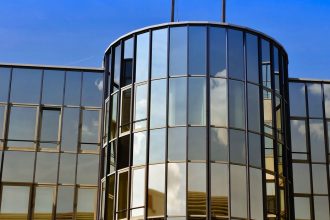As the world grapples with climate change, resource depletion, and urban overpopulation, the architecture and real estate development industries have begun to embrace a paradigm shift: building sustainably. Green architecture is no longer merely a trend but an essential philosophy that strives to create spaces that enhance human well-being while minimizing environmental impact. The shift towards sustainable real estate development is characterized by innovative practices that prioritize ecological balance, energy efficiency, community health, and resource conservation.
Understanding Green Architecture
Green architecture refers to the practice of designing buildings to meet certain sustainability criteria. This involves using materials and processes that are environmentally responsible and resource-efficient throughout a building’s life cycle, from siting to design, construction, operation, maintenance, renovation, and demolition. Key principles of green architecture include:
- Energy Efficiency: Implementing systems and technologies that reduce energy consumption and increase the use of renewable energy sources.
- Water Conservation: Utilizing technologies that promote water efficiency, such as rainwater harvesting and greywater recycling systems.
- Indoor Environmental Quality: Designing spaces to promote indoor air quality and natural lighting, which enhance the comfort and health of occupants.
- Sustainable Materials: Using materials sourced from sustainable practices, including recycled, reclaimed, or rapidly renewable resources.
Innovative Practices in Green Building Design
Sustainable building practices are becoming increasingly widespread as architects, builders, and developers recognize the benefits of green design. Here are some of the innovative practices currently shaping the landscape of green architecture:
1. Passive Design Strategies
Passive design revolves around optimizing the use of natural elements, such as sunlight and wind, to reduce the reliance on mechanical heating, cooling, and lighting systems. Techniques such as strategic orientation, thermal mass, and natural ventilation are incorporated to maintain comfortable indoor temperatures with minimal energy use.
2. Green Roofs and Vertical Gardens
Green roofs and vertical gardens help to increase biodiversity, reduce the urban heat island effect, and manage stormwater. By integrating vegetation into building designs, these elements provide insulation, improve air quality, and create aesthetically pleasing spaces.
3. Biophilic Design
Biophilic design emphasizes the connection between people and nature. By incorporating natural elements such as plants, water features, and natural light into building design, architects create environments that enhance well-being, foster creativity, and improve productivity.
4. Modular and Prefabricated Construction
Modular construction techniques allow for buildings to be constructed off-site in controlled environments, reducing waste and improving efficiency. Prefabrication minimizes the time on-site and lowers emissions associated with traditional building methods.
5. Smart Building Technologies
Incorporating advanced technologies into building systems can optimize energy use and enhance occupant comfort. Smart thermostats, advanced HVAC systems, and automated lighting controls help buildings to adapt to occupant behavior and environmental changes dynamically.
6. Life Cycle Assessment (LCA)
LCA is a method of evaluating the environmental impacts of a building over its entire life cycle. By analyzing energy use, waste generation, and resource consumption, architects and developers can make informed decisions about materials and design processes that minimize negative impacts.
The Living Building Challenge
One of the most ambitious frameworks promoting sustainable design is the Living Building Challenge (LBC). Created by the International Living Future Institute, the LBC sets a rigorous standard for sustainable building. It challenges projects to achieve seven performance areas, referred to as "Petals": Place, Water, Energy, Health & Happiness, Materials, Equity, and Beauty.
Key Features of the Living Building Challenge:
- Net Positive Energy: Buildings must produce more energy than they consume through on-site renewable sources, promoting a shift towards decentralized energy generation.
- Net Positive Water: Aims to create buildings that can capture and filter enough rainwater or other sources to sustain occupants without drawing from conventional water systems.
- Human and Ecological Health: LBC emphasizes the use of materials that are non-toxic and sourced responsibly, supporting the health of both inhabitants and the environment.
Projects that attain Living Building Certification exemplify best practices in sustainability, often serving as educational tools for the communities around them.
Conclusion
The rise of green architecture represents an essential step towards a more sustainable future. Incorporated into modern design, innovative practices and frameworks like the Living Building Challenge are paving the way for a new era in construction and real estate development. As concerns about climate change and resource scarcity grow, the integration of sustainability into architectural design will not only benefit the environment but also enhance the health and well-being of the communities that inhabit these spaces.
As we move forward, architects, builders, and developers must continue to explore and implement sustainable practices to ensure a balanced relationship between our built environment and the natural world, ultimately fostering a greener, more sustainable future for all.






